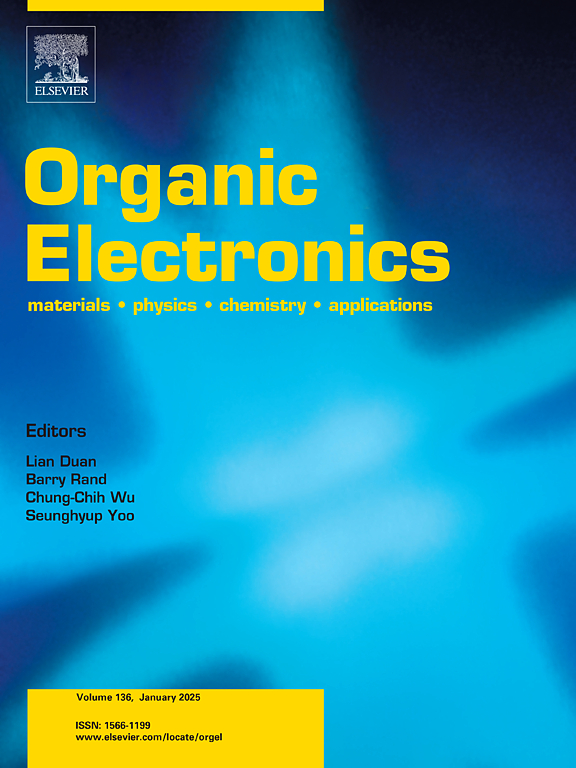Boosting the performance of triple-cation perovskite solar cells through 2-phenylethanethiol treatment and green anti-solvent
IF 2.6
4区 工程技术
Q3 MATERIALS SCIENCE, MULTIDISCIPLINARY
引用次数: 0
Abstract
Increasing the efficiency and improving the stability of perovskite solar cells (PSCs) represent major challenges for researchers and offer breakthroughs in renewable energy, driving significant progress toward sustainable energy solutions. The current study aims to increase power conversion efficiency (PCE) along with the stability of triple-cation PSCs. Herein, we employed green ethyl acetate (ETAC) anti-solvent to reduce the toxicity of the PSC production approach. Photovoltaic measurements showed a low PCE of 14.19 % for cells when we used the ETAC antisolvent. This was due to the development of a perovskite film with low crystallinity and small grains. We added 2-phenylethanethiol (2-PET) material to the ETAC anti-solvent to increase the PCE of ETAC-based PSCs. The findings showed that the 2-PET additive lowers defects in both the bulk and the surface of the perovskite layer. This improves charge transfer and inhibits charge recombination in ETAC-based PSCs. The 2-PET molecules interact with under-coordinated Pb2+ ions and improve the photovoltaic properties of the perovskite layer. The modified ETAC-based PSCs recorded a champion efficiency of 18.46 % with improved operational and ambient air stability. After 45 days of performing an operational stability test, the modified ETAC-based PSCs demonstrated less than 5 % efficiency loss without any encapsulation and at a humidity level of 20 %.

通过2-苯乙基硫醇处理和绿色抗溶剂提高三阳离子钙钛矿太阳能电池的性能
提高过氧化物太阳能电池(PSCs)的效率并改善其稳定性是研究人员面临的重大挑战,同时也为可再生能源领域带来了突破,推动了可持续能源解决方案的重大进展。目前的研究旨在提高三阳离子 PSC 的功率转换效率(PCE)和稳定性。在此,我们采用了绿色乙酸乙酯(ETAC)反溶剂,以降低 PSC 生产方法的毒性。光伏测量结果表明,当我们使用 ETAC 反溶剂时,电池的 PCE 很低,仅为 14.19%。这是由于形成了结晶度低、晶粒小的过氧化物薄膜。我们在 ETAC 反溶剂中添加了 2-苯基乙硫醇(2-PET)材料,以提高基于 ETAC 的 PSC 的 PCE。研究结果表明,2-PET 添加剂降低了包晶层的体积和表面缺陷。这改善了电荷转移,抑制了基于 ETAC 的 PSC 中的电荷重组。2-PET 分子与配位不足的 Pb2+ 离子相互作用,改善了过氧化物层的光伏特性。改进后的基于 ETAC 的 PSCs 的冠军效率为 18.46%,运行稳定性和环境空气稳定性均有所提高。在进行了 45 天的运行稳定性测试后,改良的基于 ETAC 的 PSC 在没有任何封装的情况下,在湿度为 20% 的条件下,效率损失小于 5%。
本文章由计算机程序翻译,如有差异,请以英文原文为准。
求助全文
约1分钟内获得全文
求助全文
来源期刊

Organic Electronics
工程技术-材料科学:综合
CiteScore
6.60
自引率
6.20%
发文量
238
审稿时长
44 days
期刊介绍:
Organic Electronics is a journal whose primary interdisciplinary focus is on materials and phenomena related to organic devices such as light emitting diodes, thin film transistors, photovoltaic cells, sensors, memories, etc.
Papers suitable for publication in this journal cover such topics as photoconductive and electronic properties of organic materials, thin film structures and characterization in the context of organic devices, charge and exciton transport, organic electronic and optoelectronic devices.
 求助内容:
求助内容: 应助结果提醒方式:
应助结果提醒方式:


